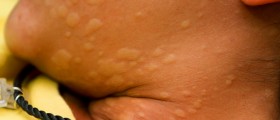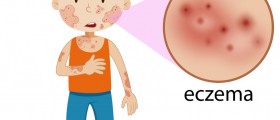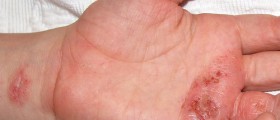
If the skin comes into contact with a harmful external substance, it is possible that one might come down with a case of contact dermatitis. The majority of cases of contact dermatitis occur through contact with irritants. About 80 per cent of cases of contact dermatitis are caused by direct contact with skin irritants. These are often encountered in the workplace. Those involved in work such as construction, metal engineering, cleaning and hairdressing are often affected by contact dermatitis. However, many common irritants can also be found in the home, such as soaps, detergents, and certain types of food. Contact dermatitis can also be caused by allergy.
Allergic contact dermatitis
Allergic contact dermatitis makes up the remaining 20 per cent of cases of contact dermatitis. Hypersensitive reaction that occurs as a result of the body’s immune system is the cause of allergic contact dermatitis. The immune system is reacting to a particular substance or group of substances. This condition has several different distinguishing features. The reaction is specific to one chemical or a group of similar chemicals, and all areas that come into contact with the offending substance will be affected. Resolution of the rash will normally occur if contact with the offending allergen is severed. Many allergens exist that can cause a contact dermatitis reaction, including nickel, rubber, fragrances, skin medications, some plants, formaldehyde and some hairdressing chemicals.
Causes
Irritant contact dermatitis can be acute or chronic. The acute form occurs as a result of a single exposure to an offending substance. Acute irritant contact dermatitis will occur in the following sequence: irritant penetration of the skin, damage of the skin cell membranes, inflammatory response, and in some cases, increased blood flow. The chronic form of irritant contact dermatitis occurs as a result of multiple exposure to irritants, even at a low level. This can take months or years to develop, and takes the following course: gradual irritant penetration, inflammatory mediators release, thickening of the epidermis, damaging of the lipid skin layer, loss of the skin’s defensive abilities, and skin dryness or scaling.
Some forms of eczema can also produce a reaction similar to that experienced as a result of contact dermatitis. Atopic eczema, seborrhoeic eczema, discoid eczema, pompholyx, stasis eczema, and asteatotic eczema can all produce similar effects to contact dermatitis. It should also be noted that any of the above eczema conditions can be worsened or exacerbated by allergic or irritant complications.
















-Causes,-Symptoms-And-Diagnosis_f_280x120.jpg)
Your thoughts on this
Loading...